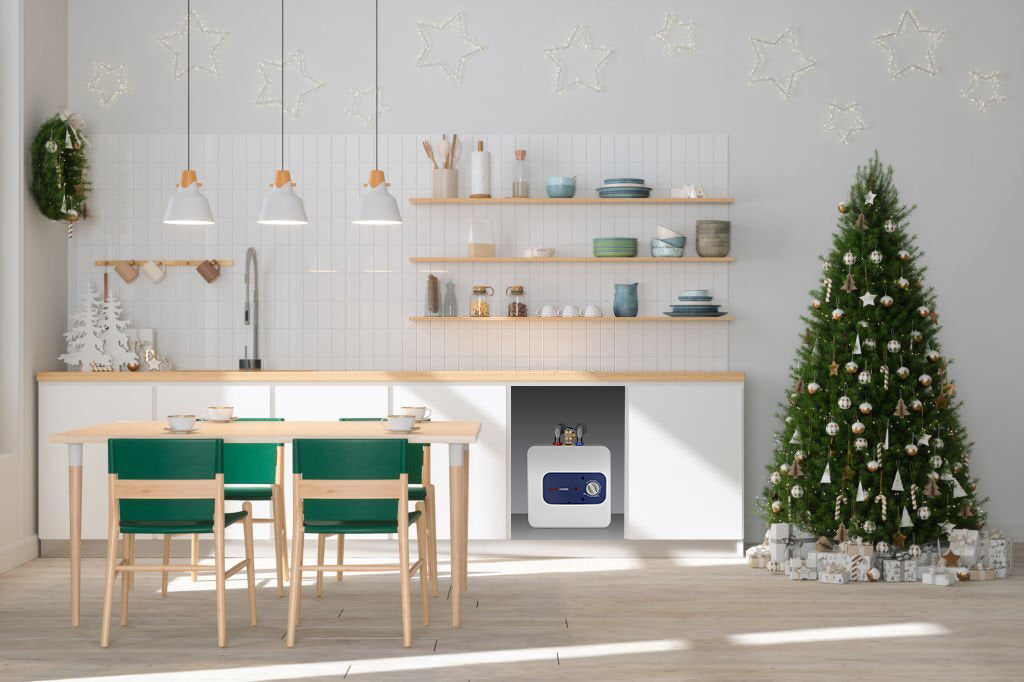- What Is an Under-Sink Water Heater?
- What types of under-sink water heaters?
- How Much Does an Under-Sink Water Heater Cost?
- Pros and Cons of an Small Under-Sink Water Heater
- Best Under-Sink Water Heaters
What Is an Under-Sink Water Heater?
Under-sink water heaters, aka point-of-use water heaters, are basically a smaller version of whole-house water heaters that provide instant hot water at the sink.
Because they're designed for tight spaces, under-sink water heaters have limited storage capacity—typically two and a half to four gallons. Flow rates depend on the main line, but most can handle up to three gallons per minute.

What types of under-sink water heaters?
Tank vs. tankless: Tank-style holds a ready supply of hot water, but may have to cycle on occasionally to keep it warm. A tankless on-demand model comes on only when there’s demand for water and typically consumes more power when it’s on than a tank-style model.
Voltage: These come in 120- and 240-volt models. Because they need more instantaneous power, many require 240 volts, while tank-style models often need only 120 volts. Models that operate at the lower voltage usually have plugs, while those at the higher voltage are hardwired.
How Much Does an Under-Sink Water Heater Cost?
Prices range from $50 to $300, not including installation, which is additional. There will also be some extras like supply hoses (cheap) and a new circuit under the sink (if you don't have one). Thermomate's under-sink water heater, probably as low as $129.99.
Pros and Cons of an Small Under-Sink Water Heater
Benefits:
- Reduced water wastage
- Convenience for cooking or cleaning
- Inexpensive and easy to install
- Low- to no-maintenance
- Water supply on demand, hot water is always available
Some of the drawbacks to consider:
- Reduced storage space under the sink
- Fluctuating water temperature
- The model with low power has a relatively small scope of application

Note: For tankless electric water heaters, the installation technical requirements will be relatively high. If you do not have the relevant skills, it is recommended to find professional electricians to help with the installation.

